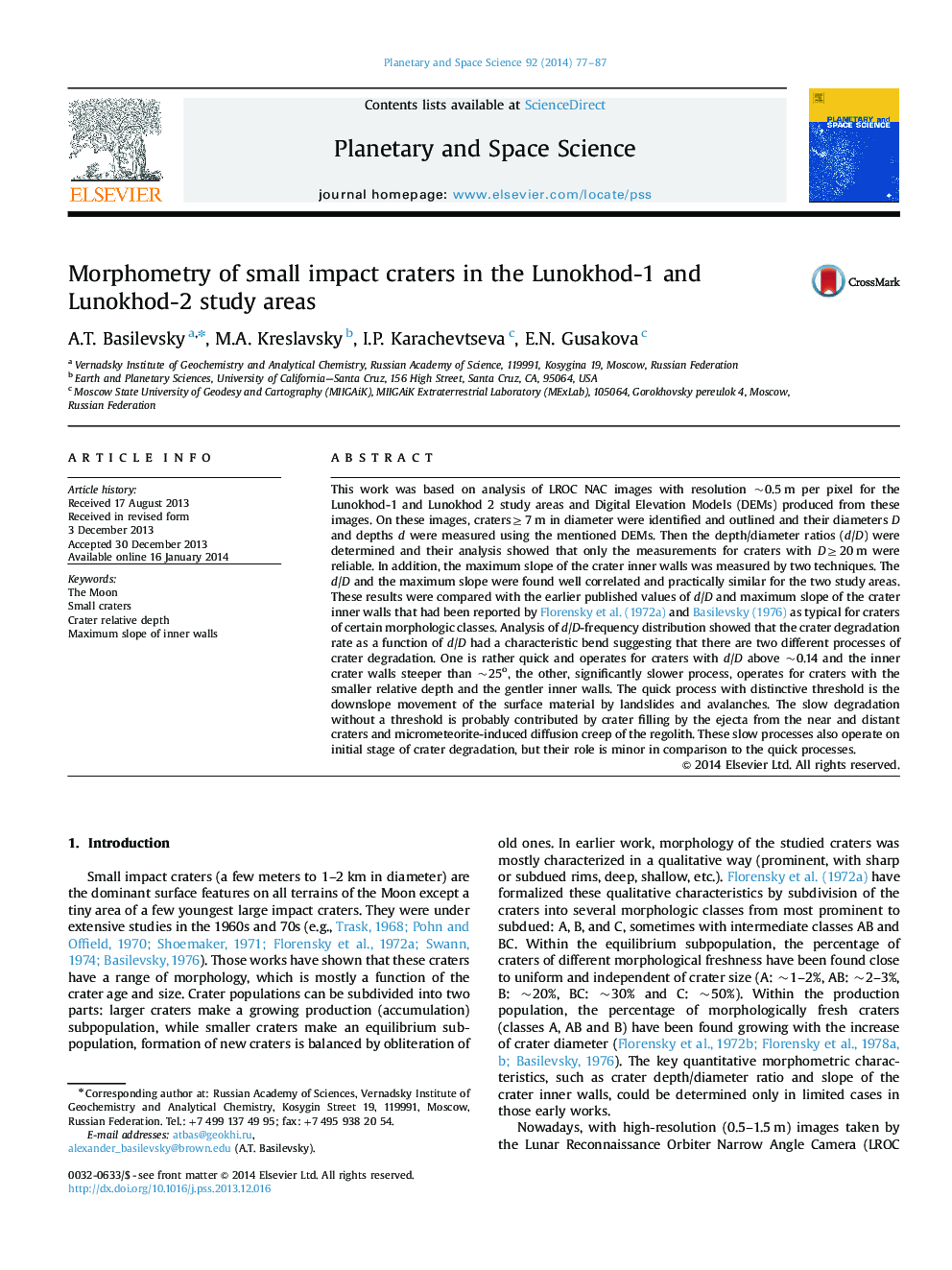| Article ID | Journal | Published Year | Pages | File Type |
|---|---|---|---|---|
| 1781166 | Planetary and Space Science | 2014 | 11 Pages |
•We study morphometry of small impact craters in the Lunokhod-1 and Lunokhod-2 areas.•We measure depth/diameter (d/D) and maximum slope of inner walls with LROC NAC DEMs.•The d/D frequency distribution bends at d/D ~0.14, which corresponds to ~25° slope.•This bend indicates that deep craters degrade much quicker than shallow ones.•Quick degradation involves landslides; slow degradation is due to regolith creep.
This work was based on analysis of LROC NAC images with resolution ~0.5 m per pixel for the Lunokhod-1 and Lunokhod 2 study areas and Digital Elevation Models (DEMs) produced from these images. On these images, craters≥7 m in diameter were identified and outlined and their diameters D and depths d were measured using the mentioned DEMs. Then the depth/diameter ratios (d/D) were determined and their analysis showed that only the measurements for craters with D≥20 m were reliable. In addition, the maximum slope of the crater inner walls was measured by two techniques. The d/D and the maximum slope were found well correlated and practically similar for the two study areas. These results were compared with the earlier published values of d/D and maximum slope of the crater inner walls that had been reported by Florensky et al. (1972a) and Basilevsky (1976) as typical for craters of certain morphologic classes. Analysis of d/D-frequency distribution showed that the crater degradation rate as a function of d/D had a characteristic bend suggesting that there are two different processes of crater degradation. One is rather quick and operates for craters with d/D above ~0.14 and the inner crater walls steeper than ~25o, the other, significantly slower process, operates for craters with the smaller relative depth and the gentler inner walls. The quick process with distinctive threshold is the downslope movement of the surface material by landslides and avalanches. The slow degradation without a threshold is probably contributed by crater filling by the ejecta from the near and distant craters and micrometeorite-induced diffusion creep of the regolith. These slow processes also operate on initial stage of crater degradation, but their role is minor in comparison to the quick processes.
